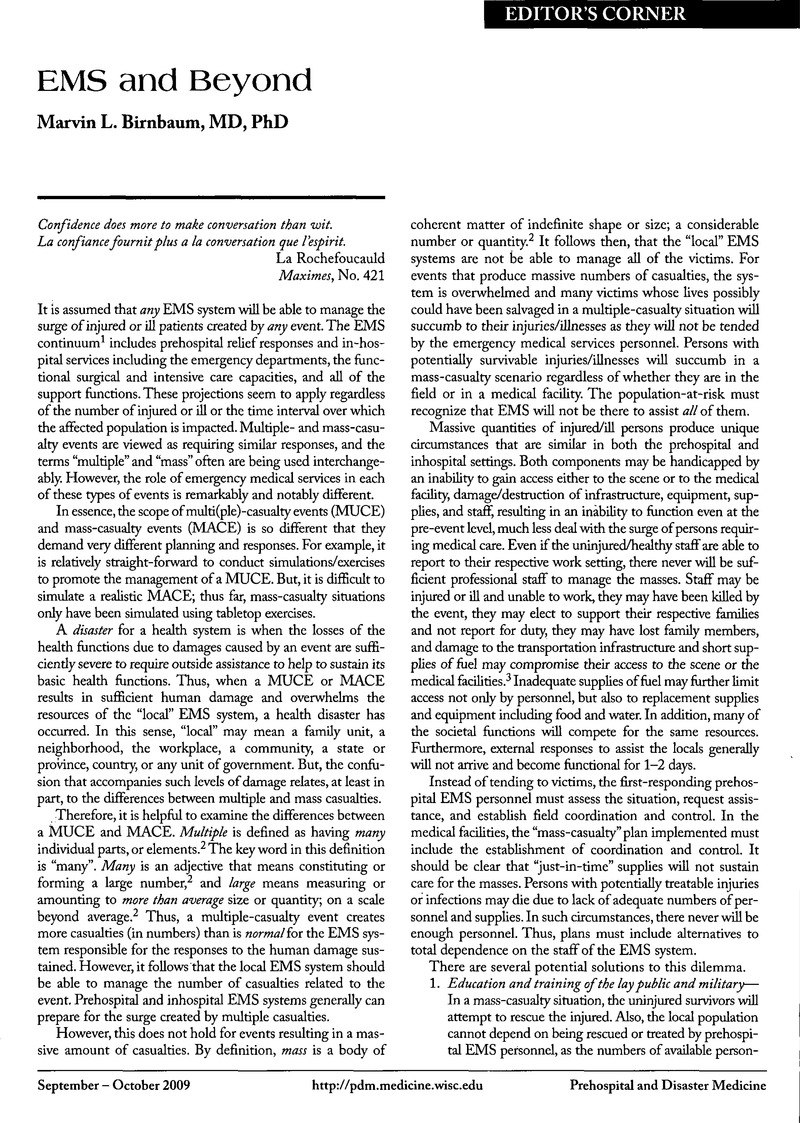No CrossRef data available.
Article contents
Abstract
An abstract is not available for this content so a preview has been provided. As you have access to this content, a full PDF is available via the ‘Save PDF’ action button.

- Type
- Editor's Corner
- Information
- Copyright
- Copyright © World Association for Disaster and Emergency Medicine 2009
References
2.Stein, JS (ed): The Random House Dictionary—Concise Edition. Random House: New York 1980.Google Scholar
3.Beyer, J, Birnbaum, ML, Padjen, P, et al. : People Responding to Emergencies Program. Available at http://www.prepmadison.org/survey.htm. Accessed 18 September 2009.Google Scholar
4.Birnbaum, ML, Ofrin, R, Kohl, P: Health Aspects of the 2004 Indian Ocean Earthquake and Tsunami. Dehli: World Health Organization, South East Asia Regional Office and the World Association for Disaster and Emergency Medicine, in press, 2009.Google Scholar
5.Lin, JY, Bhalla, N, King, RA: Training medical students in bag-valve-mask technique as an alternative to mechanical ventilation in a disaster setting. Prehosp Disaster Med 2009;24(5):402–406.CrossRefGoogle Scholar
6.Sundnes, KO: Non-doctors as trauma surgeons? Prehosp Disaster Med 2008;23(6):490–491. Editorial Comments.CrossRefGoogle Scholar
7.Heng, YV, Davoung, C, Husum, H: Non-doctors as trauma surgeons? A con-trolled study of trauma training for non-graduate surgeons in rural Cambodia. Prehospital Disast Med 2008;23(6):483–489.)CrossRefGoogle Scholar
8.Janneck, L, Cooper, N, Frehywot, S, Mowafi, H, Hein, K: Human Resources in Humanitarian Health: Humanitarian Action Summit 2009 Working Group report. Prehosp Disaster Med 2009;24(4):s184–s193.CrossRefGoogle ScholarPubMed
12.World Health Organization/Pan-American Health Organization: Guidelines for the use of foreign field hospitals in the aftermath of sudden-onset disasters. Prehosp Disaster Med 2003;18(4):278–290.Google Scholar


